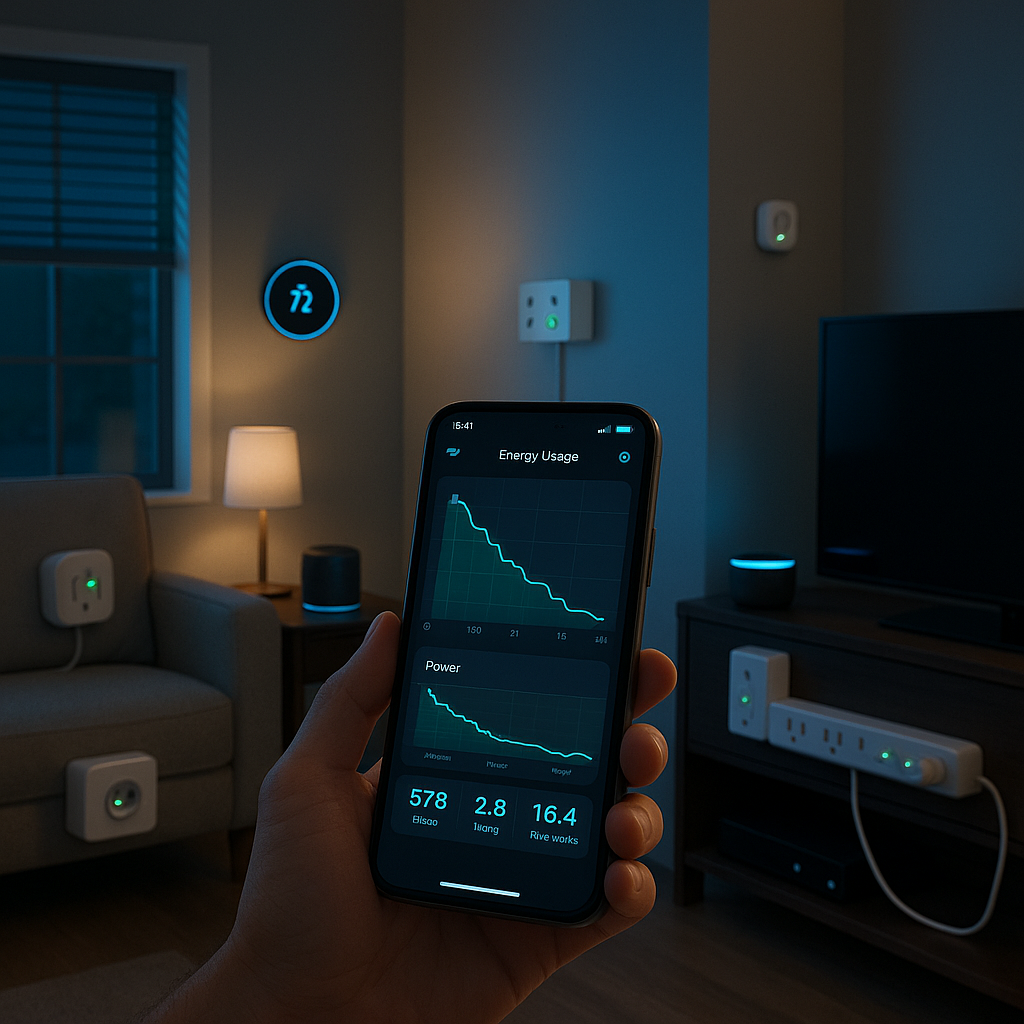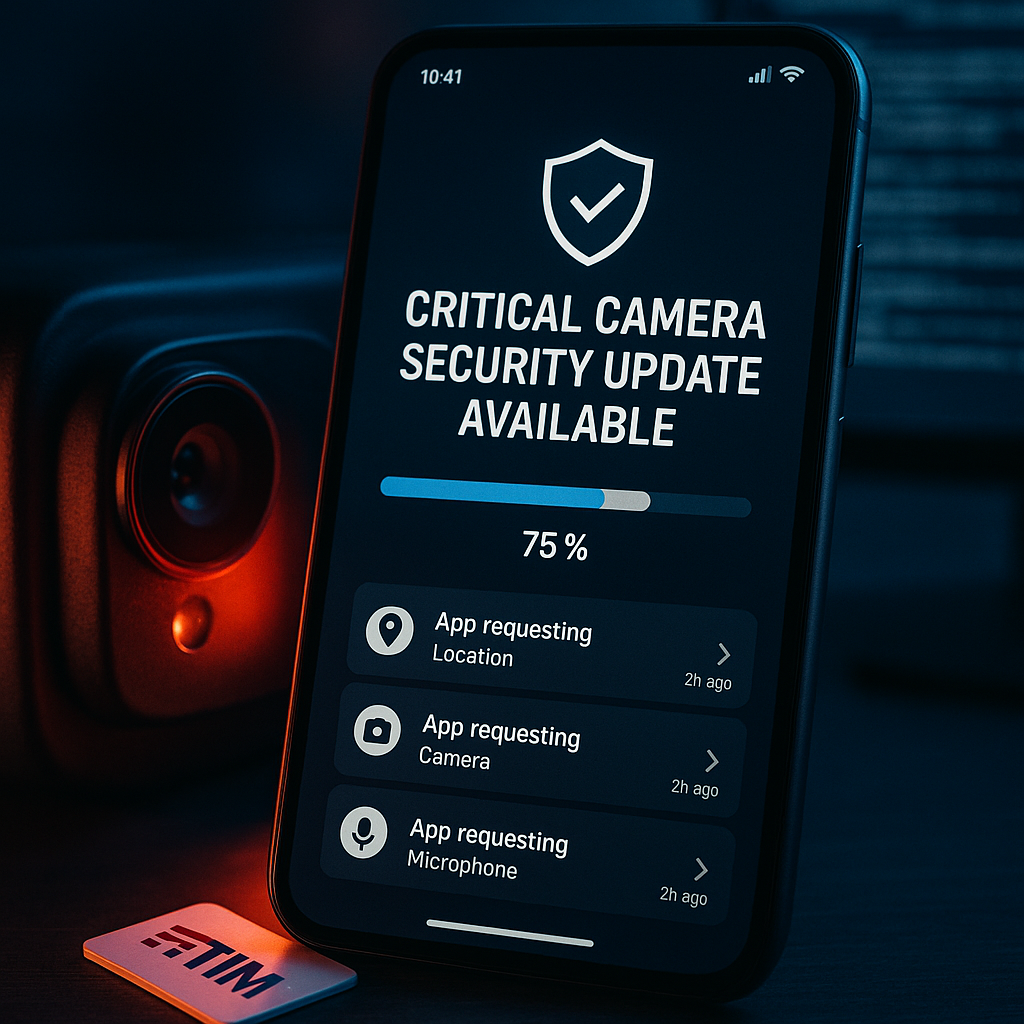Key Takeaways
- Making your home smarter goes beyond having the latest gadgets. It is an accessible, practical step to cut energy costs and reduce your carbon footprint. The following strategies show how leveraging automation and smart plugs can turn energy savings from a hopeful goal into your everyday reality.
- Automate routines to slash wasted energy. Timers and programmable schedules ensure your lights, appliances, and electronics operate only when necessary, significantly minimizing standby power use.
- Smart plugs provide real-time control and insight. Monitor and control devices remotely, meaning you no longer have to worry about leaving the iron on or losing energy to “vampire” power drain.
- Sensors create a responsive, efficient home. Motion and occupancy sensors turn off lights and gadgets in empty rooms, delivering substantial savings with zero extra effort.
- Zone your energy use for targeted precision. Grouping devices by room or activity with smart hubs enables you to fine-tune comfort and trim excess energy use more effectively.
- Voice assistants make sustainable habits effortless. Controlling devices with simple voice commands keeps energy-saving routines smooth and app-free.
- Optimize heating and cooling efficiently. Automated thermostats and plug-in fans work only when needed, reducing wasted energy and lowering utility bills.
- Set reminders and maintenance alerts. Automations help you remember to change filters or unplug seldom-used devices, extending their life and boosting efficiency.
- Plug-and-play upgrades bring instant results. Smart plugs are quick to install, allowing you to incorporate energy savings for any standard device with minimal hassle or cost.
- Track usage for smarter energy choices. Analytics and usage reports from smart plugs spotlight energy-hungry appliances so you can adjust habits and maximize savings.
- Investing in green tech multiplies your impact. Pairing automation and smart plugs with energy-efficient appliances compounds your results, powering a home that is both greener and smarter.
With these strategies, energy-saving becomes easy, achievable, and tailored to your needs. Whether you’re adding your first smart plug or creating a fully automated home, these ideas fit. Let’s explore each hack to put these takeaways into action for both your wallet and the environment.
Introduction
Reducing your energy bill doesn’t demand a full home renovation or advanced electronics skills. By applying a handful of smart home hacks, you can use automation and smart plugs to turn your daily routines into surprising, effortless ways to save energy while also shrinking your carbon footprint.
Smart plugs, automated schedules, and responsive sensors work together so your devices operate only when you really need them. Problems like forgotten lamps or wasteful standby power can become things of the past. These straightforward upgrades enable you to monitor, control, and optimize energy use by room, making sustainable changes easier than ever.
Curious how green technology can deliver both financial and environmental rewards? Here are ten smart home hacks that make saving energy simple, automatic, and deeply satisfying.
Un passo avanti. Sempre.
Unisciti al nostro canale Telegram per ricevere
aggiornamenti mirati, notizie selezionate e contenuti che fanno davvero la differenza.
Zero distrazioni, solo ciò che conta.
 Entra nel Canale
Entra nel Canale
Harnessing Smart Plugs for Maximum Efficiency
Smart plugs are foundational tools for building an energy-efficient home. Acting as intelligent go-betweens for your outlets and devices, these compact gadgets monitor energy usage and let you control connected appliances remotely. Typically priced between $15 and $30, a single smart plug can cut phantom power drain by up to 10% for connected electronics.
Strategic Placement for Impact
Positioning your smart plugs thoughtfully yields the greatest benefits. Focus on high-consumption devices that do not require continuous power, such as:
- Entertainment systems and gaming consoles (potential savings: 40–60 watts per hour when idle)
- Home office equipment like printers and monitors
- Kitchen appliances, including coffee makers and microwaves
- Seasonal items, such as space heaters and decorative lights
For even better efficiency, group similar devices onto power strips connected to a single smart plug. This approach helps you create controllable “zones” for targeted savings across your home.
If you’re looking for more energy-saving devices to complement your setup, explore these eco-friendly gadgets that actually help lower bills and reduce your carbon footprint.
Automating Schedules for Optimal Energy Use
Transforming smart plugs from simple on/off switches into sophisticated energy managers starts with smart scheduling. Timely, adaptive programming ensures devices run only when needed.
Time-Based Control Strategies
- Morning Routines: Have your coffee maker start up just before you wake.
- Work Hours: Automatically disable non-essential devices during peak energy rate periods.
- Evening Shutdown: Trigger a “goodnight” routine to power down TVs and gaming equipment.
- Weekend Adjustments: Set flexible schedules for days with different activity patterns.
These routines typically trim unnecessary device runtime by two to three hours each day, driving consistent long-term savings.
If budget is a concern or you’re just getting started, check out these tips for DIY smart home automation on a budget to make the most of your investment.
Tracking and Analyzing Usage Patterns
Knowledge is power when it comes to energy optimization. Modern smart plugs deliver detailed usage data, guiding your decisions for maximum efficiency.
Key Metrics to Monitor
- Peak Usage Times: Identify when your devices use the most energy.
- Standby Power Draw: Measure energy wasted while devices are idle.
- Usage Duration: Track which appliances stay active longest.
- Cost Analysis: Calculate the actual expense of running each device.
Many households discover three or four major sources of energy waste within the first month of monitoring, uncovering real opportunities for improvement.
Green Tech Integration Strategies
The true potential of smart plugs unfolds when combined with other green technologies. Creating layered, integrated systems multiplies your efficiency gains.
Building an Efficient Ecosystem
- Pair smart plugs with motion sensors to automate lighting.
- Use temperature sensors to regulate climate control devices like heaters and fans.
- Connect with smart thermostats for unified energy management.
- Monitor everything via centralized dashboards for direct oversight.
Such integration can boost your home’s energy efficiency by 15–25% over using standalone solutions. This makes the investment in a larger ecosystem worthwhile.
Considering upgrading your climate control? Discover the best smart thermostats for energy savings for effective and comfortable solutions.
Advanced Automation Techniques
Going beyond basic schedules, advanced automation unlocks even more energy savings through sophisticated control and adaptability.
Conditional Triggers and Rules
Design automations that react to real-world data and conditions, including:
- Weather forecasts (adjust heating or cooling accordingly)
- Occupancy sensors (power down empty rooms instantly)
- Fluctuating energy rates (shift high-use tasks to off-peak times)
- Dependent equipment (ensure accessories power up or down together)
These techniques often achieve an extra 5–10% in energy reduction compared to traditional scheduling.
You can also repurpose technology you already own for your smart home setups. Learn how in this guide to reuse your old phone for DIY smart home ideas.
Un passo avanti. Sempre.
Unisciti al nostro canale Telegram per ricevere
aggiornamenti mirati, notizie selezionate e contenuti che fanno davvero la differenza.
Zero distrazioni, solo ciò che conta.
 Entra nel Canale
Entra nel Canale
Maximizing Savings Through Data
Turning data into action is the next step in optimizing your smart home for efficiency.
Analytics-Driven Optimization
- Review weekly energy reports to spot emerging trends.
- Compare appliance performance to detect less efficient devices.
- Tweak automation rules based on actual use patterns.
- Monitor accumulated savings and refine strategies regularly.
Actively engaging with your energy data can yield up to 30% more savings compared to simply installing automations and leaving them alone.
Troubleshooting and Optimization
For continued peak performance, your smart home system needs periodic maintenance and tweaks.
Common Challenges and Solutions
- Signal Issues: Improve WiFi coverage with extenders or mesh networks.
- Schedule Conflicts: Regularly check for and resolve overlapping routines.
- Device Compatibility: Test all new smart home gear before full integration.
- System Overload: Balance automation complexity with reliability for seamless daily use.
Routine audits and updates help prevent inefficiency and keep your home running smoothly.
If you’re considering which new tools to add, get inspired with the best smart gadgets and home devices for 2025.
Seasonal Optimization Strategies
Maximizing year-round efficiency means adjusting your automations for different weather patterns and seasons.
Seasonal Adjustments
- Summer: Prioritize cooling systems and fan schedules to beat the heat.
- Winter: Focus on optimizing heating equipment.
- Holidays: Manage decorative lighting to avoid bill spikes.
- Transitional Periods: Fine-tune schedules between peak winter or summer.
Adapting your routines seasonally can reduce related energy consumption by 20–30% compared to unchanged, static schedules.
Industry Applications and Extended Benefits
The benefits of energy-saving automation and smart control stretch well beyond the household. In healthcare, automated climate and lighting controls in clinics reduce operational costs while maintaining comfortable environments for patients. In educational facilities, scheduling smart plugs in classrooms and laboratories optimizes device use and saves power during off-hours. The retail sector uses sensors and automation to reduce lighting and HVAC costs after hours without compromising security. Even legal offices and financial institutions streamline their energy use through zone-based automation and device monitoring, aligning with broader sustainability goals.
Conclusion
Making smart plugs the cornerstone of your energy-saving strategy turns every outlet into a source of efficiency. With thoughtful placement and intelligent routines, these affordable devices consistently deliver impressive savings and help cut wasted power. When combined with sensors, thermostats, and robust analytics, smart plugs create a home that responds to your needs and adapts automatically for comfort and sustainability.
Continuously analyzing usage and fine-tuning automations will keep your system agile, maintaining peak performance as habits, devices, and seasons change. This data-driven, adaptive approach transforms convenience into real, measurable impact. It empowers you to make sustainable choices every day. Looking to the future, homes that embrace smart automation and integrate green technologies will not only enjoy lower bills and smaller carbon footprints but also set the standard for responsible energy stewardship. The real question is not whether to adopt these innovations, but how creatively and effectively you can leverage them to build a truly efficient, future-ready household.





Leave a Reply